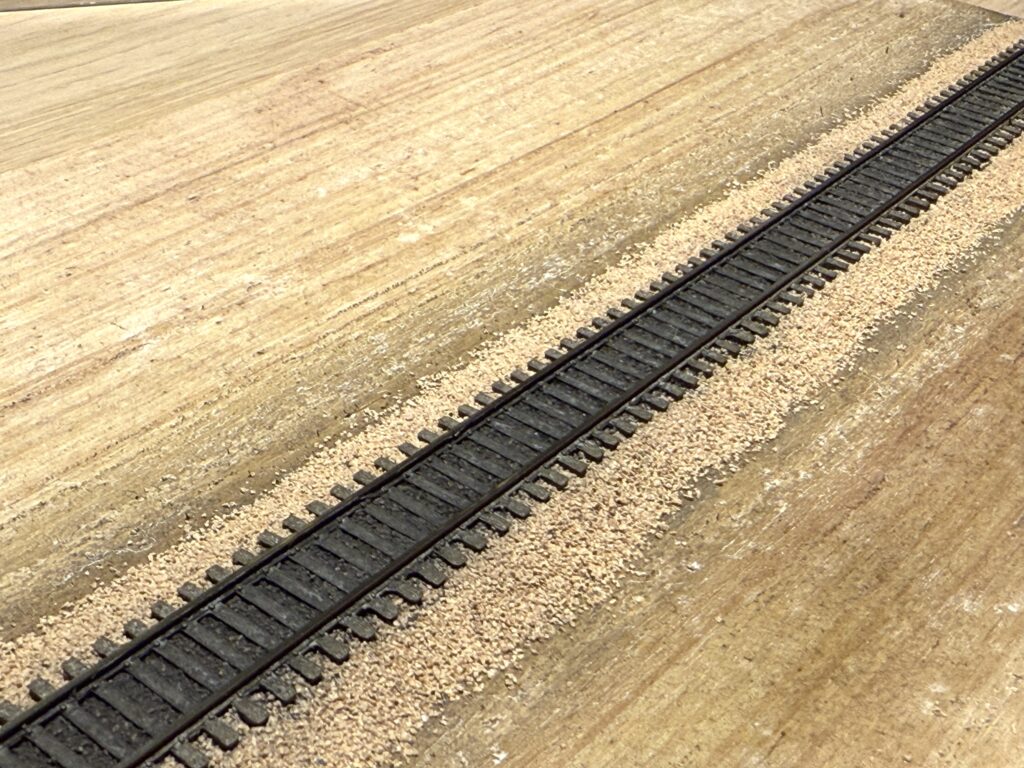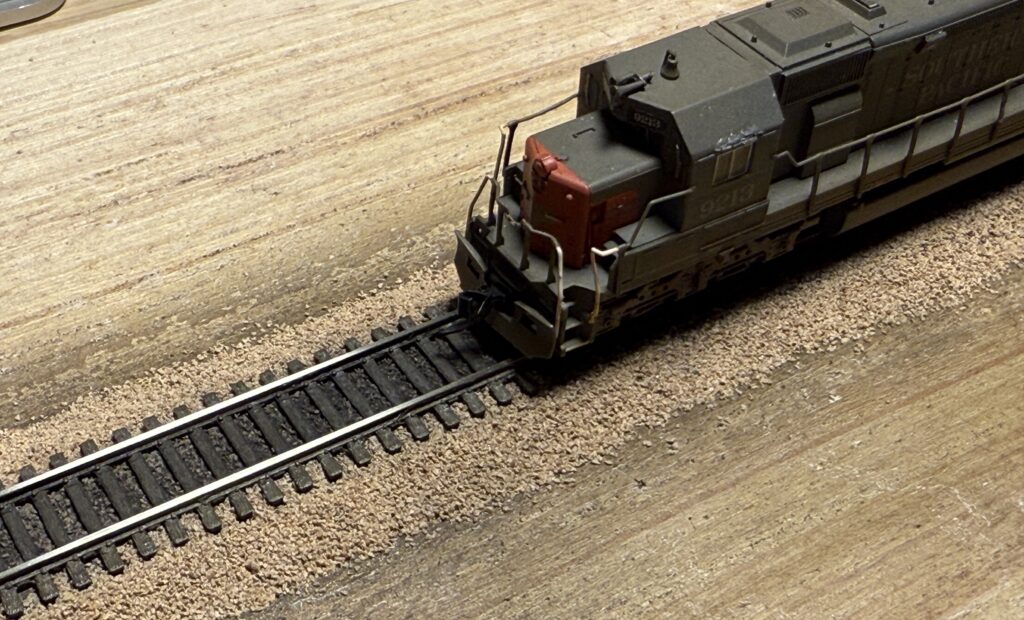Part I: Building an N scale diorama to test my modeling skills
Before committing to adding scenery to the layout, I want to build an N scale diorama featuring a section of track with ballast, a road, vegetation, and a few details.
It doesn’t have to be perfect, but it should serve as a test of my modeling skills after a 15-year hiatus from model railroading.
Basic Trackwork
I glued a strip of EVA foam to a piece of plywood, then secured a section of Micro Engineering Code 55 flex track, which I’ll be using on the layout.

Painting
Next, I painted the track Railroad Tie Brown. I had two Polly Scale bottles from the late 2000s, and both held up surprisingly well.
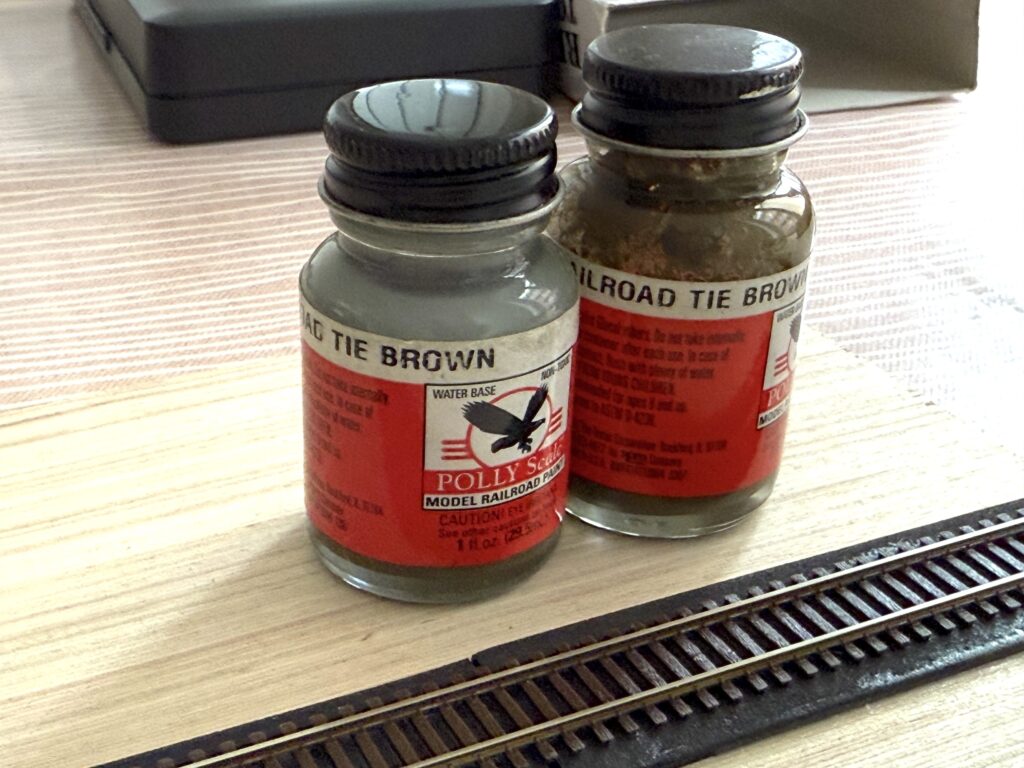
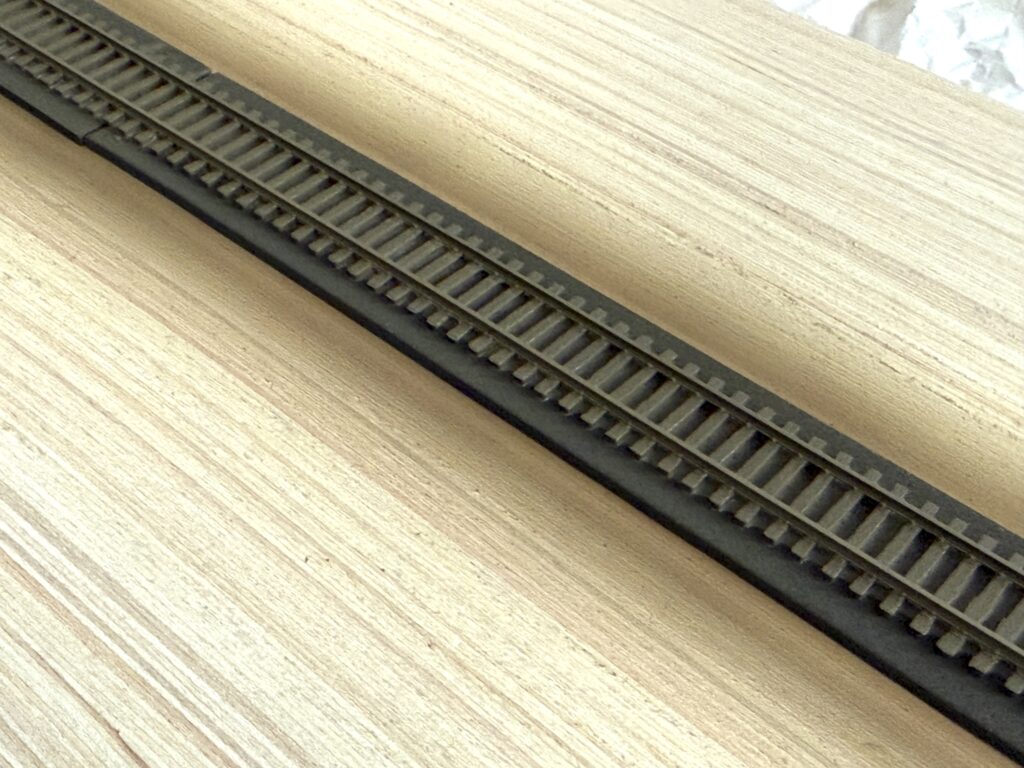
Ballast
The next step was ballasting the track using Woodland Scenics Buff B1373. I used a technique I have relied on for years – first spreading the ballast over the track, then using both a soft brush and my fingers to evenly distribute it between the ties.
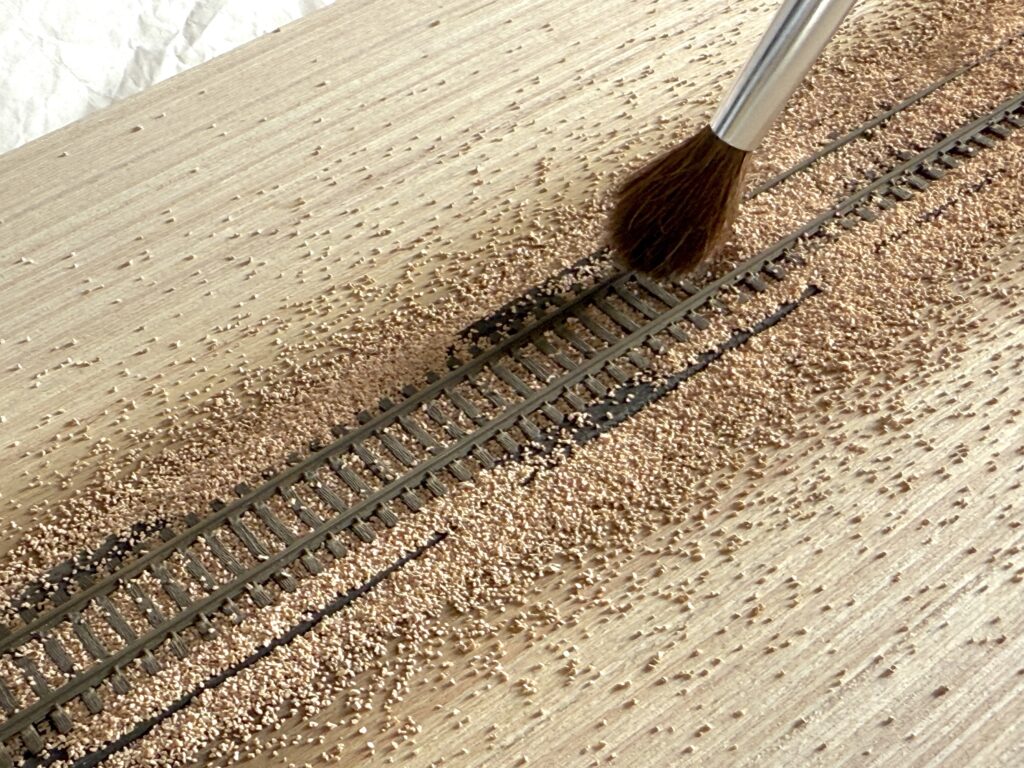
Then, I misted the ballasted track with a 50/50 mix of water and 99.9% isopropyl alcohol, letting it soak for a minute. After that, I used a syringe to apply a 50/50 mix of water and matte medium, slowly sliding it along the rails to glue down the ballast.
I used Liquitex Matte Medium, following the advice of YouTuber Boomer Diorama.
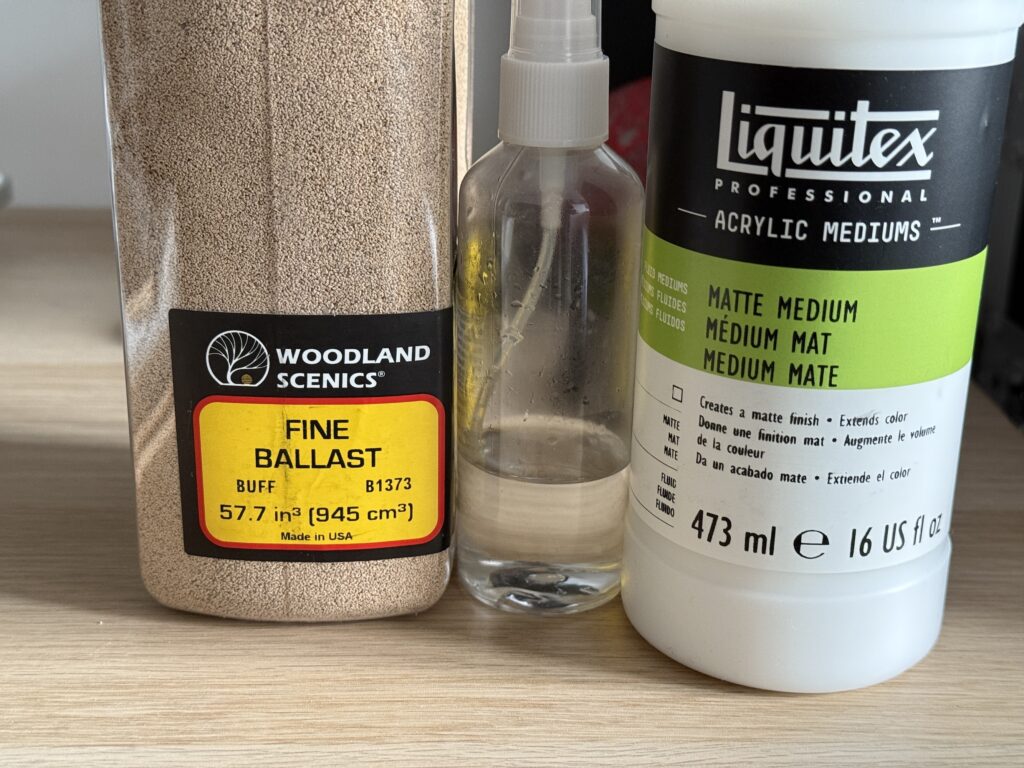
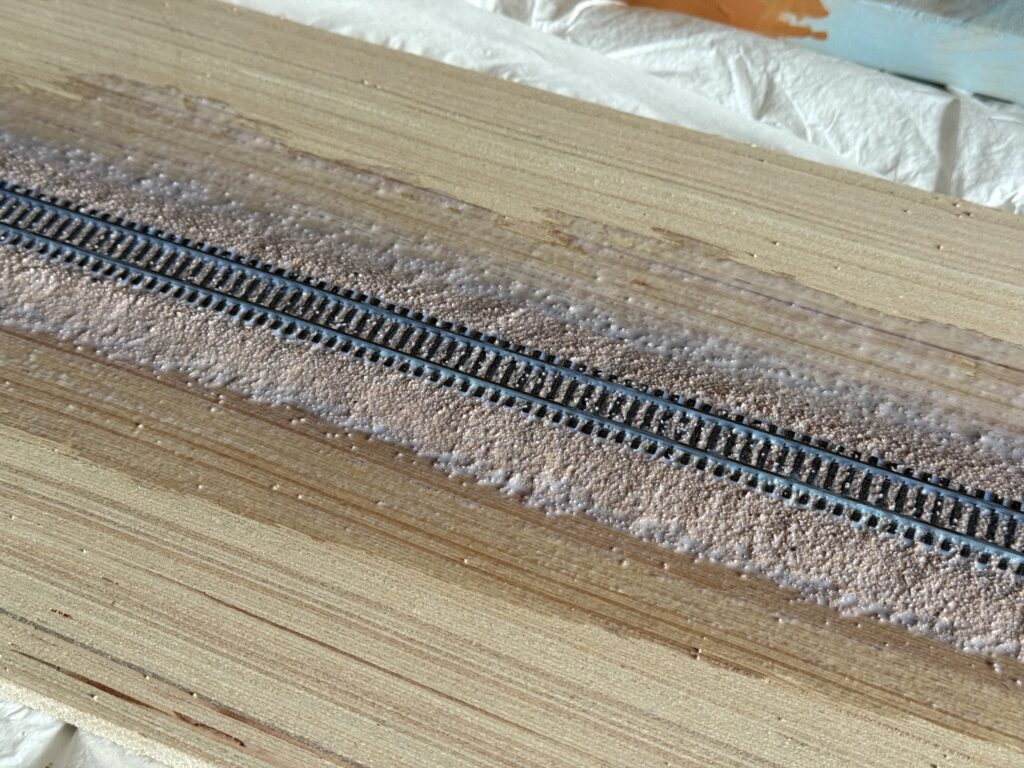
Here is the result of the N scale diorama with ballast after the glue have dried.
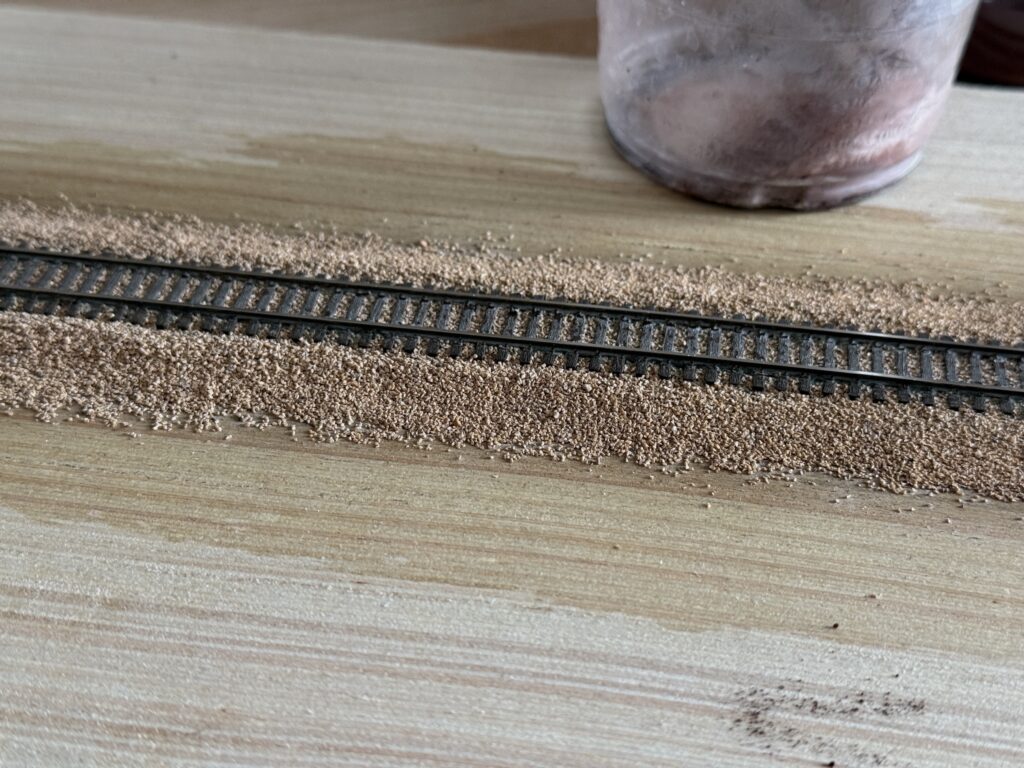
Weathering the N scale diorama track
For increased realism, I mixed dark brown powdered pigments with plaster of Paris in a 50/50 ratio to weather the area between the rails. Using a brush, I evenly distributed the mixture along the track with several strokes.
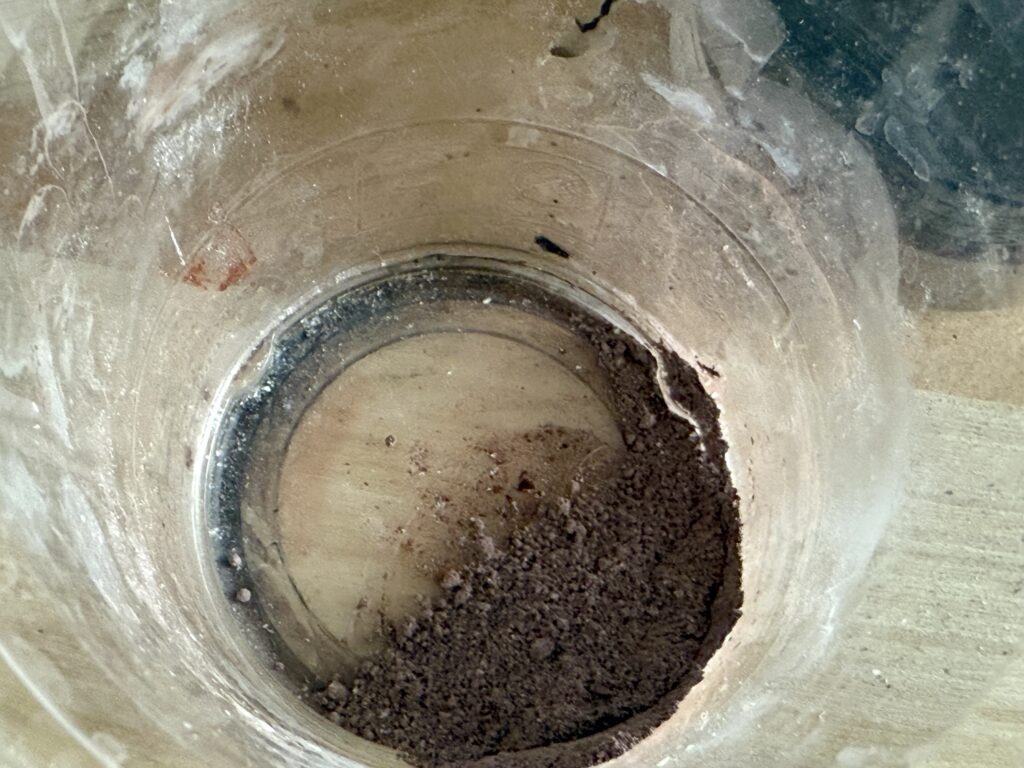
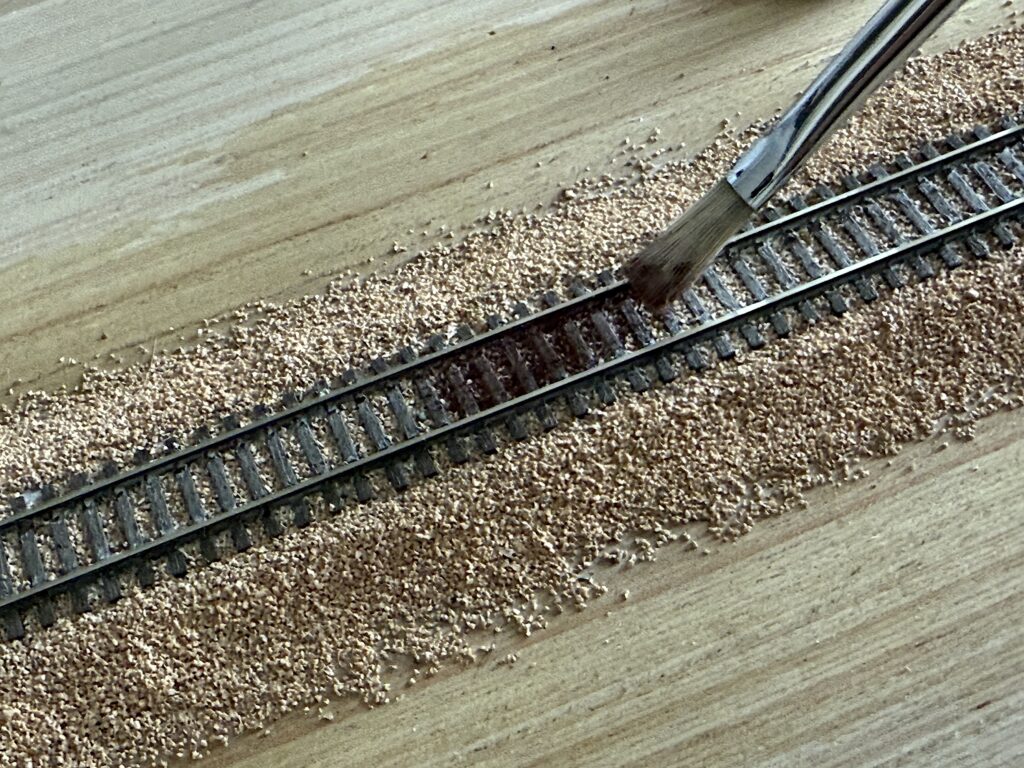
Then, I misted the track with water, allowing the plaster to react and permanently set the weathering in place.
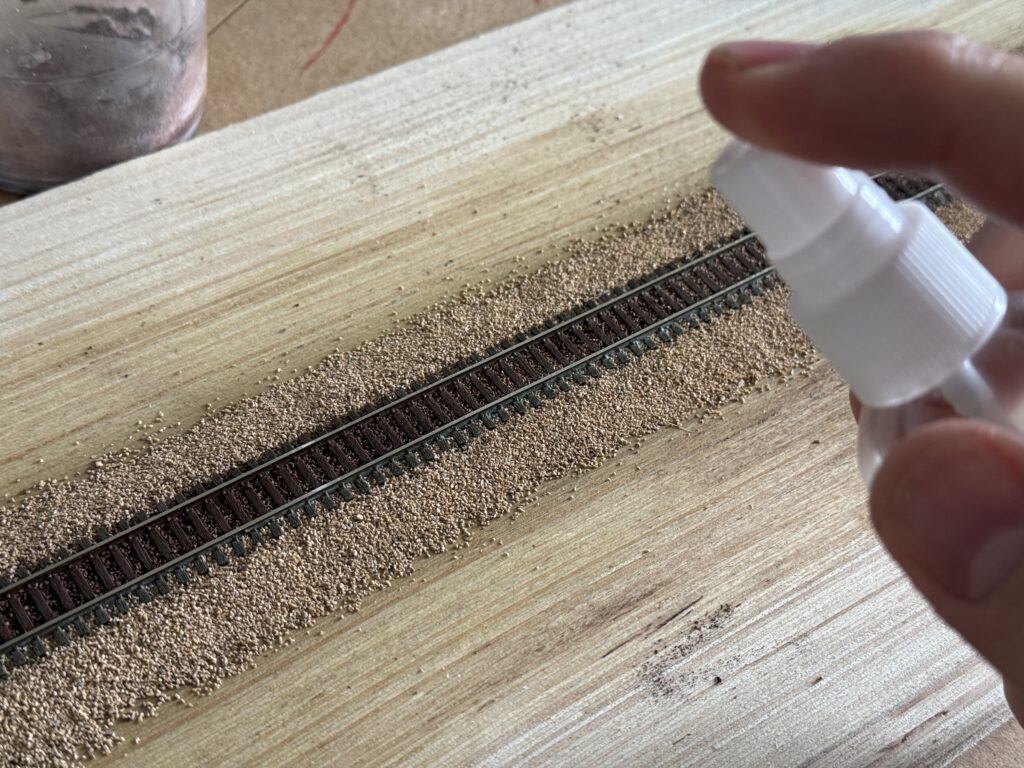
Starting Over the N Scale Diorama
Well, I wasn’t happy with the result. The ballast wasn’t evenly distributed, and some grains ended up on top of the ties. I also applied too much matte medium, which left a visible film on the rail sides. Long story short – it was a failure.
And I’m glad I failed. I’d rather make mistakes on a small N scale diorama than on the actual layout. That’s exactly why I built it – to test my skills, learn, and improve. So, I scraped off the ballast, removed the track, and started over.
Referring to other model railroads
I looked through photos of my previous layouts, and to my surprise, the ballast work wasn’t as good as I remembered. It wasn’t terrible, but I now aim for better results. So, I started studying photos and videos of other modelers’ layouts and sought advice on online forums.
One key takeaway was to use less ballast and spread it as evenly as possible. A helpful trick is tapping the tops of the rails with the same teaspoon used to pour the ballast – this helps it settle and compact for a more realistic finish.
I removed the EVA foam and trimmed it to be slightly narrower. Then, I glued it back down and secured the flex track with white glue.
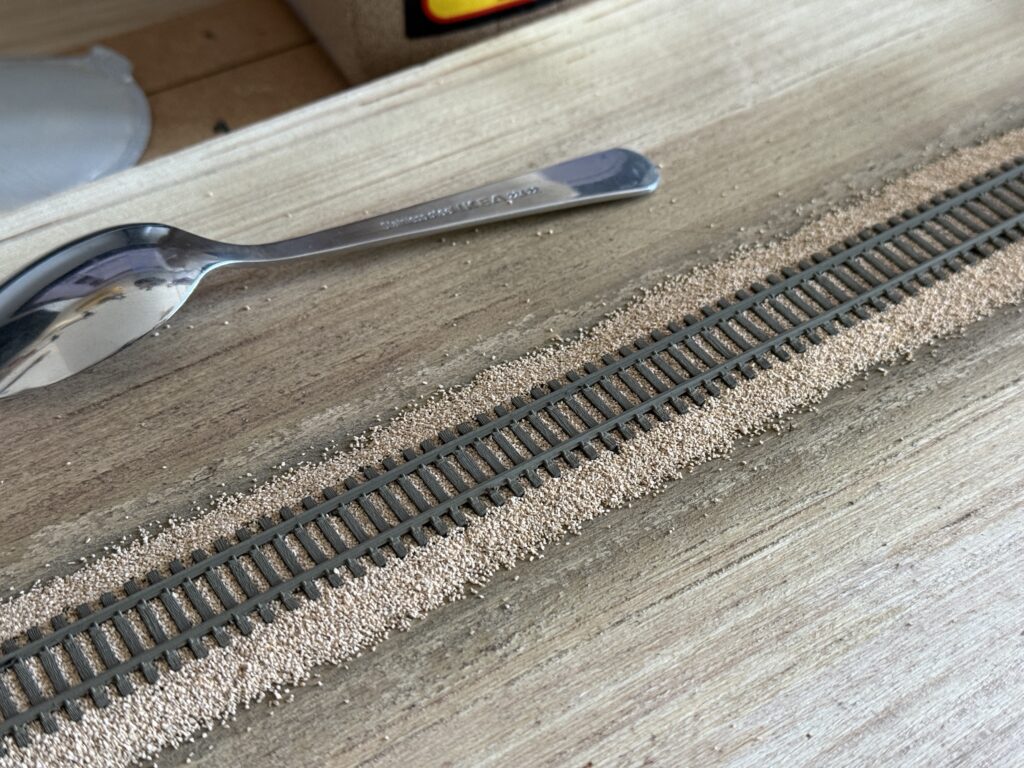
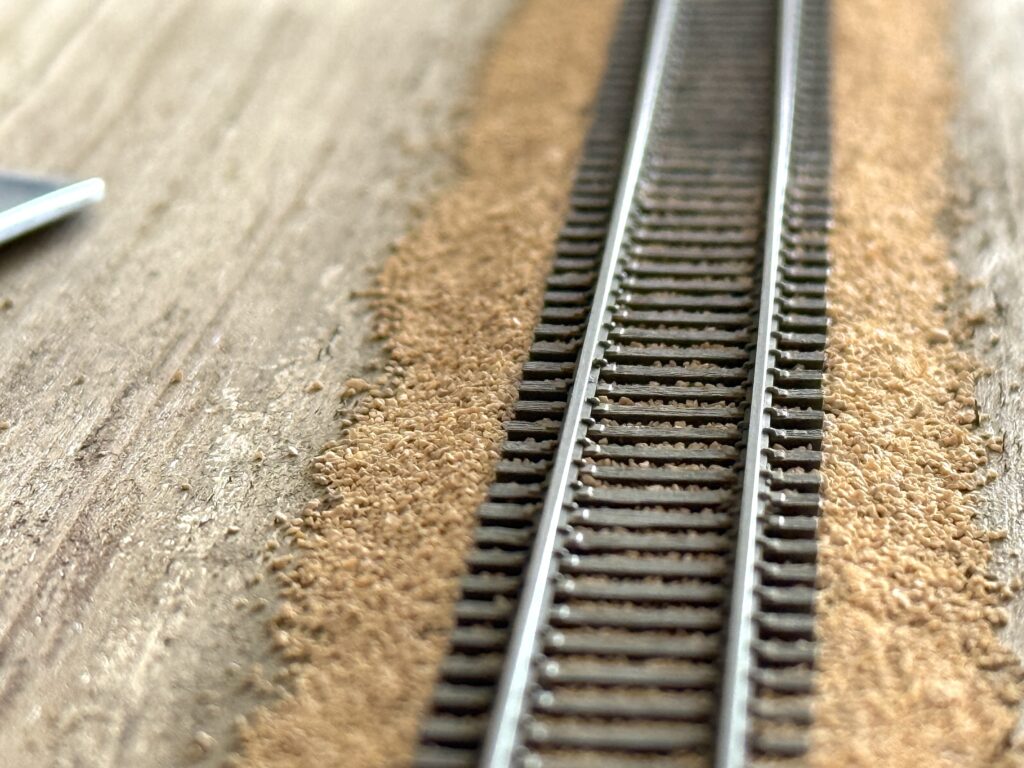
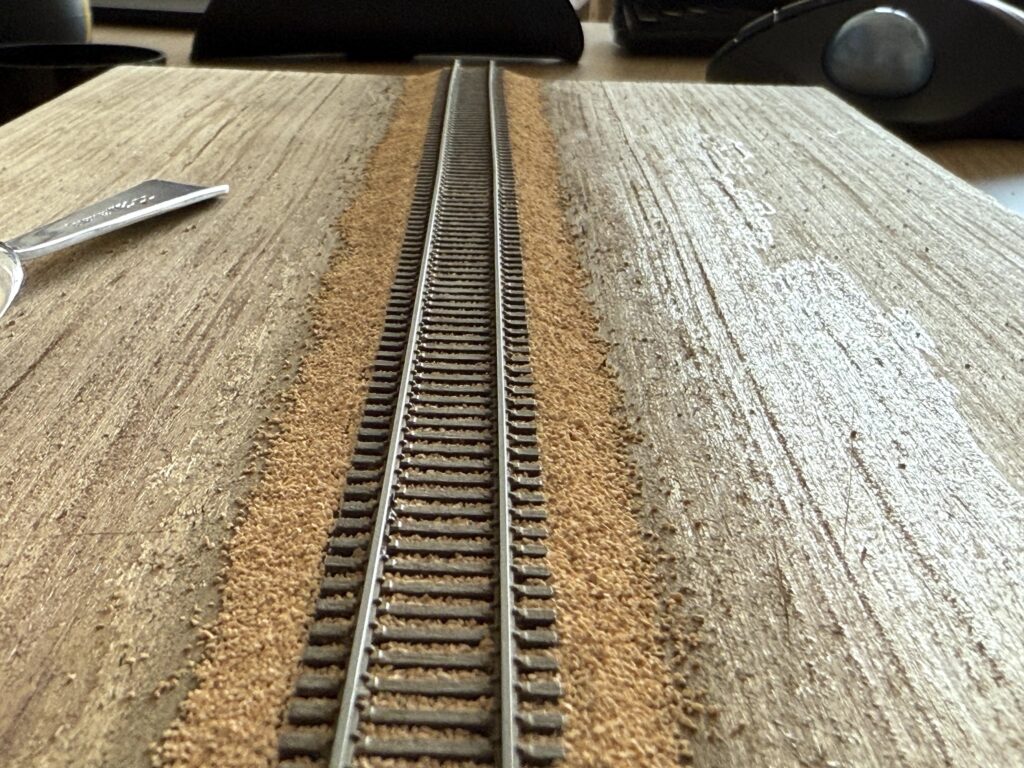
Glueing down the ballast
The track looks a lot better now. I mist the ballast with the same 50/50 water and alcohol mix, and let it soaked. This time I used another method for glueing the ballast, again thanks to an online model railroading forum member. They suggested to mist the ballast, instead of using a pipette or syringe. I used the same 50/50 water and matte medium mix.
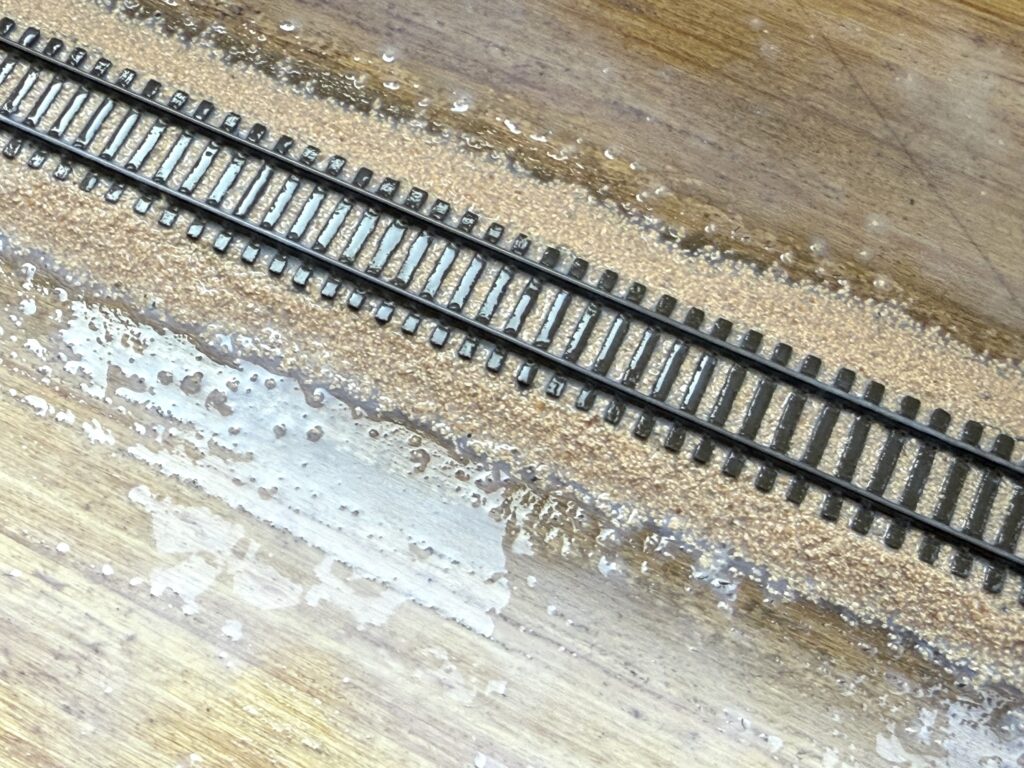
Then, I let it dry for a day. It looks much better than the first attempt.
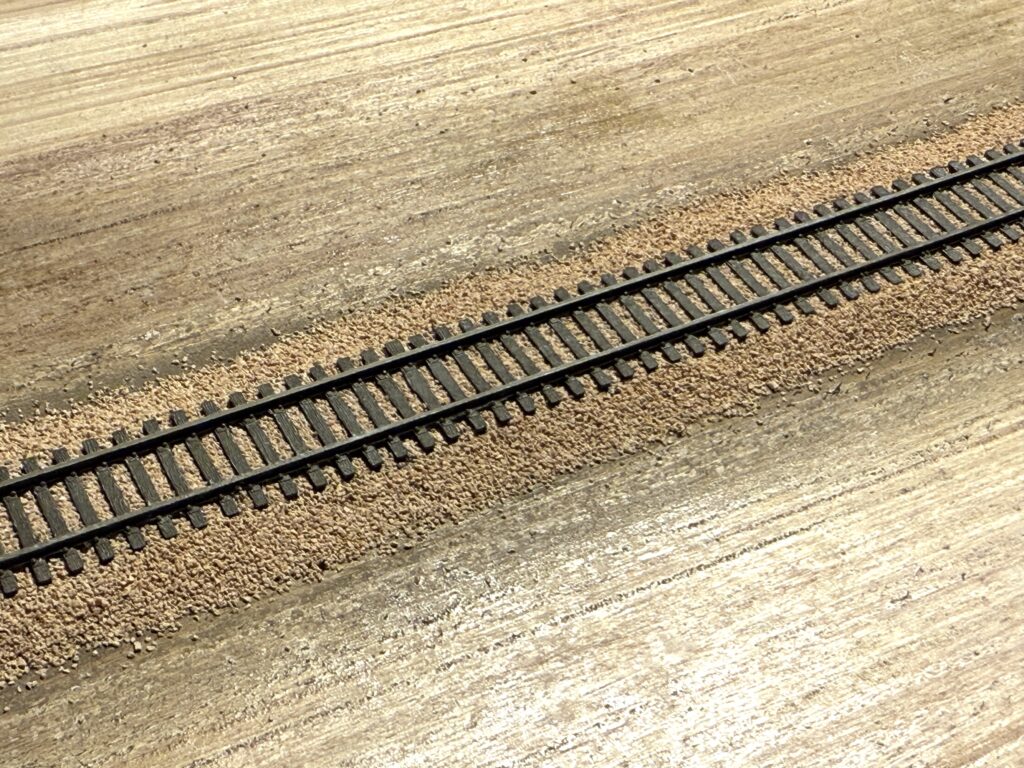
Weathering, Take two.
This time I used black powdered pigments, as brown blends better when mixed with yellow and it more suited for sidings or spurs. 50/50 mixed with plaster of Paris.
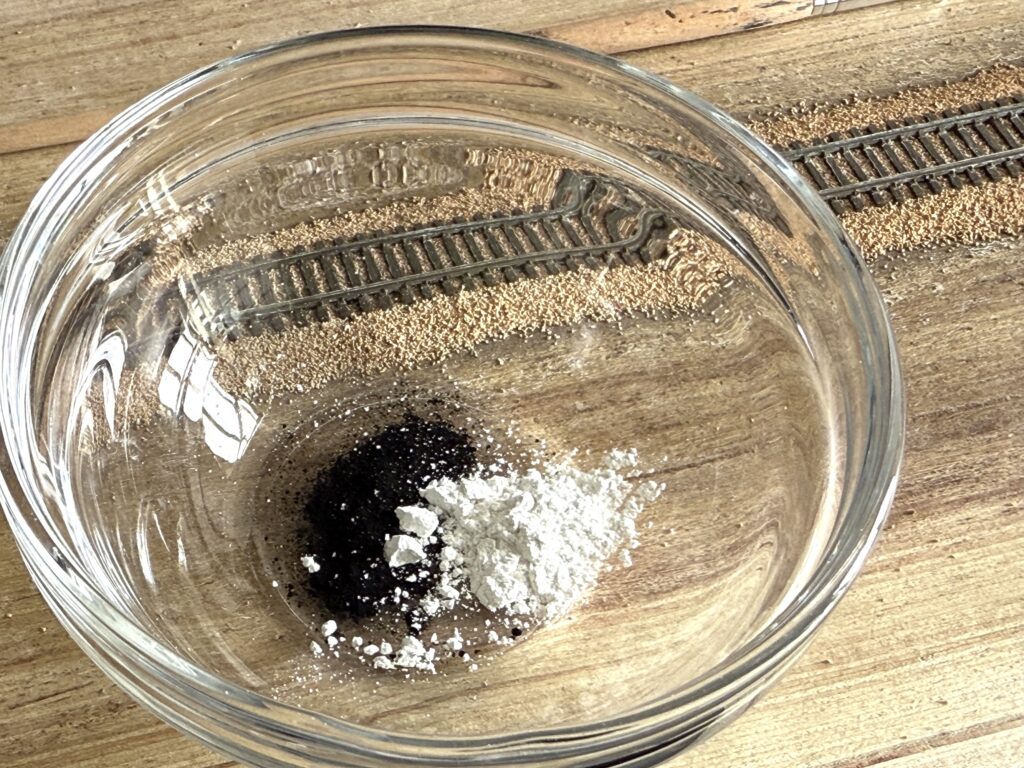
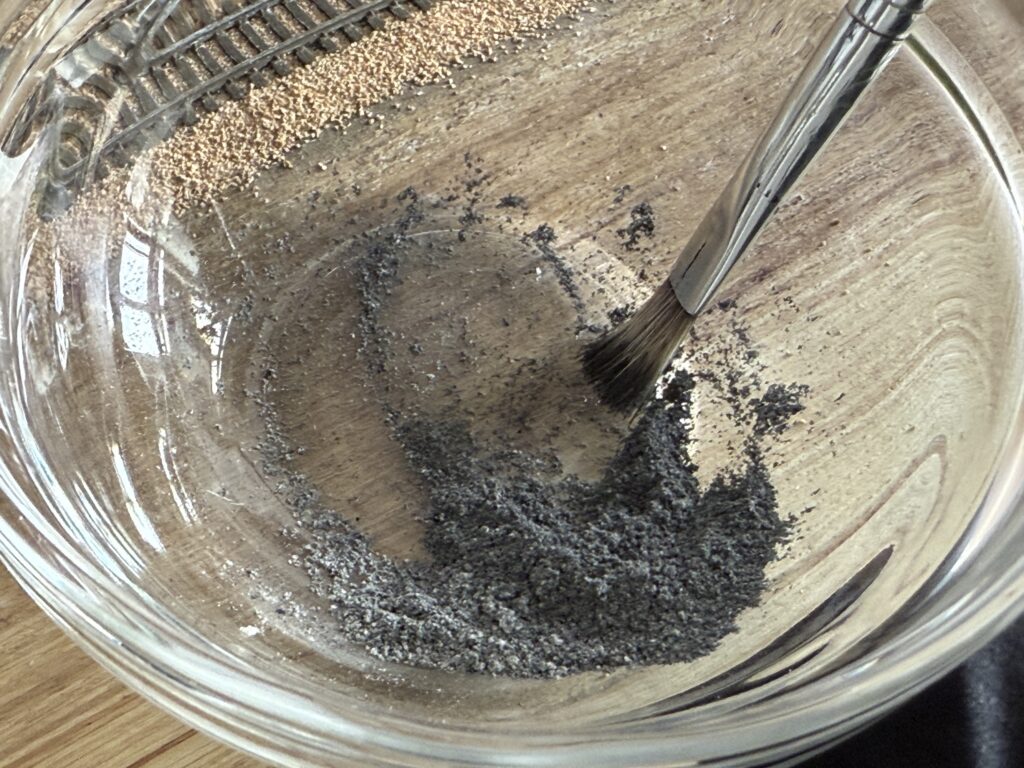
With the same technique, I distributed the pigments between the rails with a flat brush.
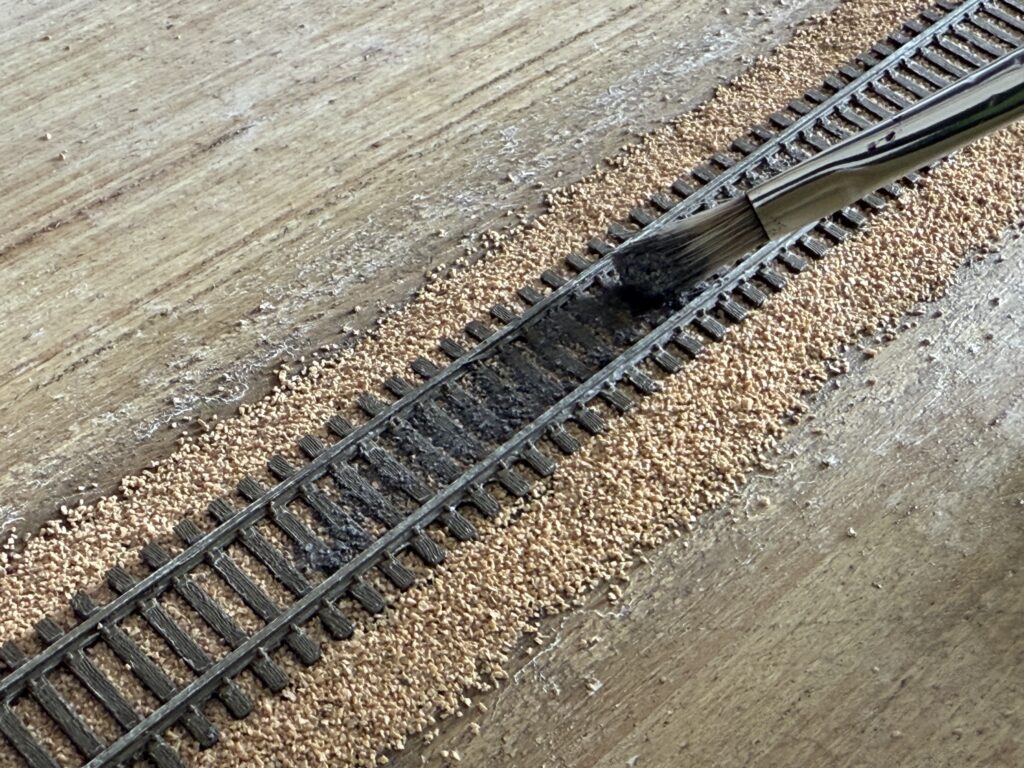
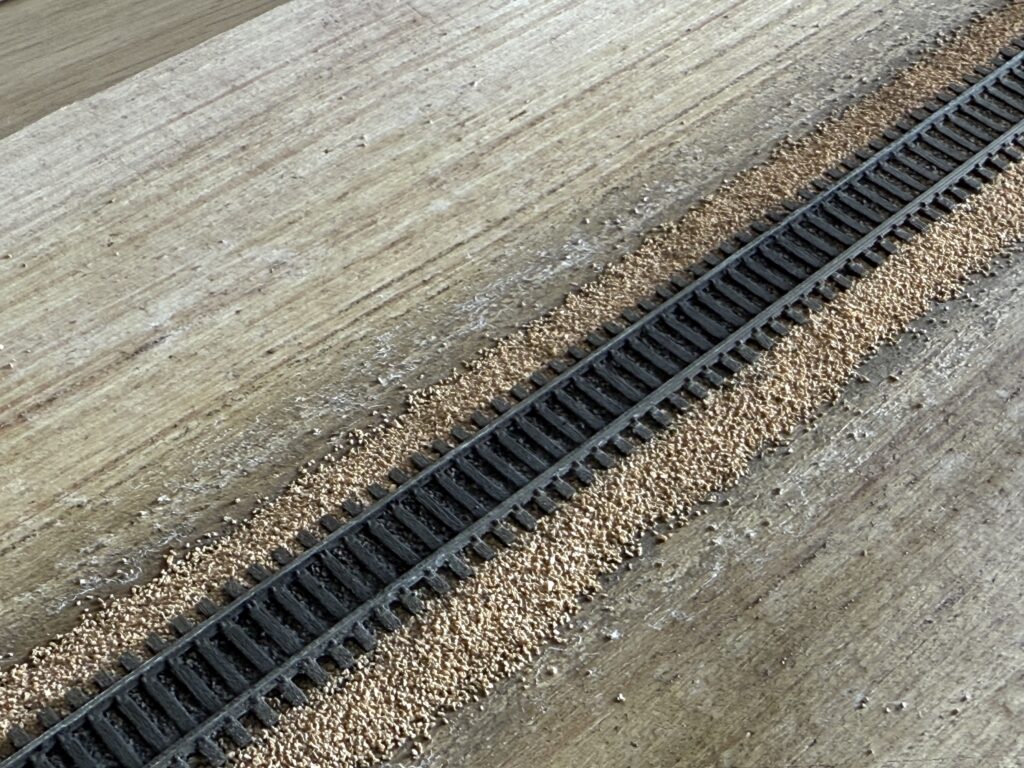
Then, I misted the diorama with water, allowing the Plaster of Paris in the pigment mix to bond and permanently fix the track weathering.
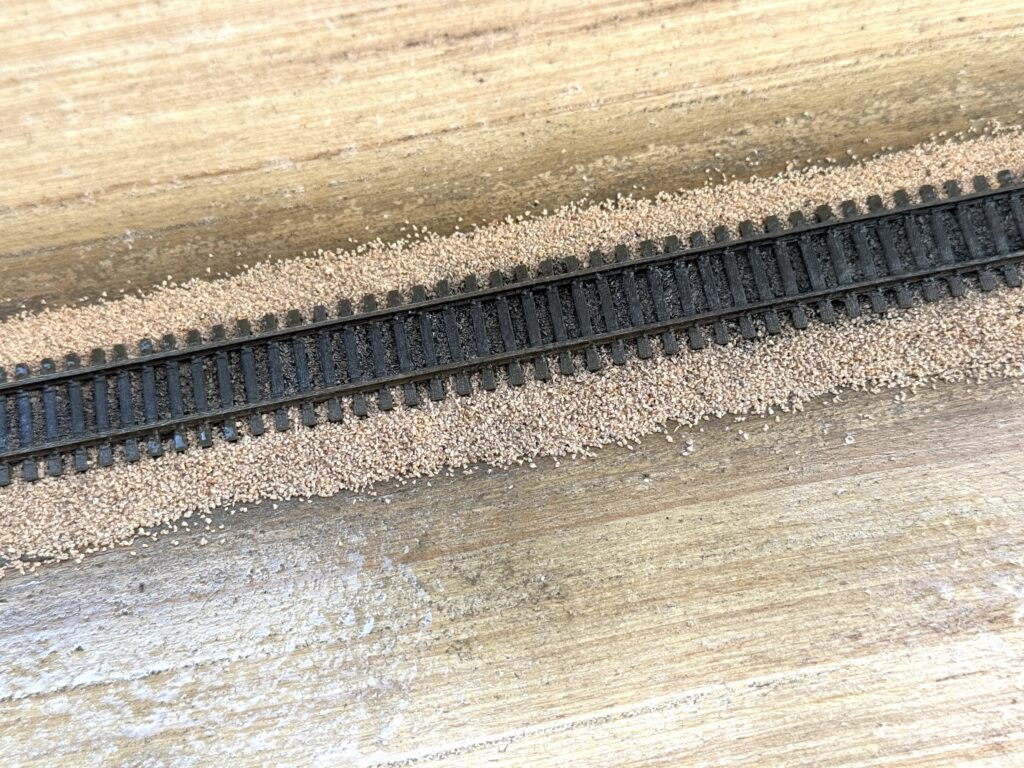
Here is the final result after the pigments dried and the rail heads were cleaned. Maybe I could have gone lighter with the soot and grease weathering between the rails or used a 30/70 pigment-to-plaster mix instead of 50/50.
